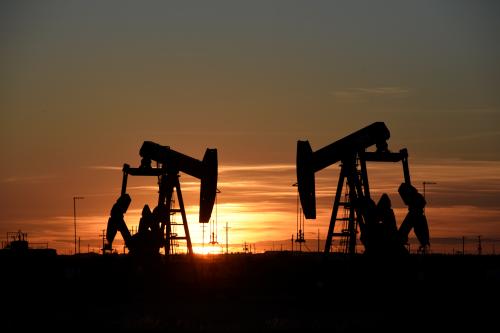After two quiet decades, nuclear power has experienced a dramatic resurgence of interest. The potential benefits of increased energy independence, a hedge against volatile fossil fuel prices, and clean, low-carbon baseload electricity now appeal to a broad coalition of interests. Nuclear power is a familiar technology, easily substituted for coal-fired baseload electricity, and polls indicate that it is enjoying broader public support than in decades past. The Obama administration’s energy policy is focused on renewing our energy infrastructure while reducing greenhouse gas emissions, thus providing an opening for nuclear expansion. And climate legislation now working its way through Congress will likely impose a cost on carbon emissions and create new nuclear tax incentives and loan guarantees, giving nuclear electricity an additional boost relative to emissions-intensive coal [1]. The dramatically-altered landscape of energy politics has given reasonable cause to believe that a “nuclear renaissance” may be at hand.
Yet the real risk of nuclear power is not regulation, public perception, safety, or even waste storage; the real risk of nuclear power is, as it was in past decades, cost and delay. Recent major upward cost revisions, combined with the technology’s historical propensity to cost risks have called into question the accuracy of earlier low estimates of nuclear electricity costs. Industry claims for new construction would require that they build new reactors as quickly and more cheaply (in terms of total delivered costs per kWh) than any reactor ever built in the U.S. [2]. And even the frequently touted French nuclear experience, which most analysts believe provides the best model for nuclear power, showed a factor of three and a half increase in inflation-adjusted construction costs from 1970 to 2000, according to a recently released analysis by Arnulf Grübler at the International Institute of Applied Systems Analysis [3].
The industry argues, reasonably, that new standardized reactor designs, improved modular construction techniques, and streamlined permitting will allow it to build reactors more cheaply and quickly, which would justify heavy government investment in government R&D. But how much improvement can we expect? Recent indications are disconcerting. The first new nuclear construction in Western Europe in 20 years is underway in Finland; that reactor is already three years behind schedule and 77 percent over budget [4]. In December 2008, the Tennessee Valley Authority had to double its cost estimate for two new reactors to as high as $17 billion. And a group of researchers at MIT found that estimated costs for building new nuclear power plants increased by 15 percent per year in real terms from 2003-2009 [5]. While the cost per delivered kilowatt-hour depends also on operational efficiency and other factors, dramatic capital cost escalation would very likely remove nuclear from the list of low-cost electricity sources.
We’ve seen policy deadlock before on nuclear power—both in the U.S. and, to a lesser extent, some countries in Europe—because there’s no easy way to balance the legitimate concerns of those opposed to nuclear power with the legitimate optimism of the nuclear community. Fortunately, the questions of cost-risk are of a slightly different character than these historical sticking points, and can be evaluated against financial data. As such, we believe there is a way forward that entails neither blindly pursuing the technology nor blithely ignoring it.
A handful of reactors will probably be built in the U.S. over the next 10 to 20 years, driven by subsidies for the first such plants to be built. Given the history of this technology, we advise that the U.S. take a two-phase “show me” approach to new nuclear subsidies that depends on the cost performance of this first wave of new reactors. First, we can set clear and verifiable metrics for costs over time. Such metrics could include cost per kilowatt of installed capacity; costs per kilowatt of capacity delivered; operation and maintenance costs; fuel costs; disposal costs; capacity factors; and cost per kilowatt-hour delivered. Second, verified data on all aspects of nuclear reactor economics and performance should be made publicly available. These data should be subject to standard auditing and reporting procedures, and should be updated on at least an annual basis.
If the industry’s predictions are roughly correct, we will have found a promising energy option that would justify further investment. But if costs spiral upward, public funding of R&D and subsidies for nuclear power should be re-examined. An objective reckoning based on empirical evidence can enable all parties to move forward, recognizing the real potential of nuclear power while accurately acknowledging its potential shortcomings.
We have a choice about how we generate electricity. A cautious, open-minded, and transparent rollout of new nuclear spending will enable us to verify that the changes the industry has made will be enough to guarantee low-cost nuclear power that does not unreasonably divert resources from other promising technologies.
[1] Mufson, S., A nuclear power boost for bill, in The Washington Post. 2009: Washington, DC.
[2] Koomey, J.G. and N.E. Hultman, A reactor-level analysis of busbar costs for US nuclear power plants. Energy Policy, 2007. 35 (11): p. 5630-5642.
[3] Grübler, A., An assessment of the costs of the French nuclear PWR program 1970–2000, in IIASA Report. 2009, International Institute of Applied Systems Analysis: Laxembourg, Austria. p. 36.
[4] Hollinger, P., Finnish reactor provisions hit Areva profits, in Financial Times. 2009: London.
[5] MIT, 2009 Update to The Future of Nuclear Power: An Interdisciplinary MIT study. 2009, Massachusetts Institute of Technology: Cambridge, MA.



Commentary
Op-edThe Real Risk of Nuclear Power
December 2, 2009